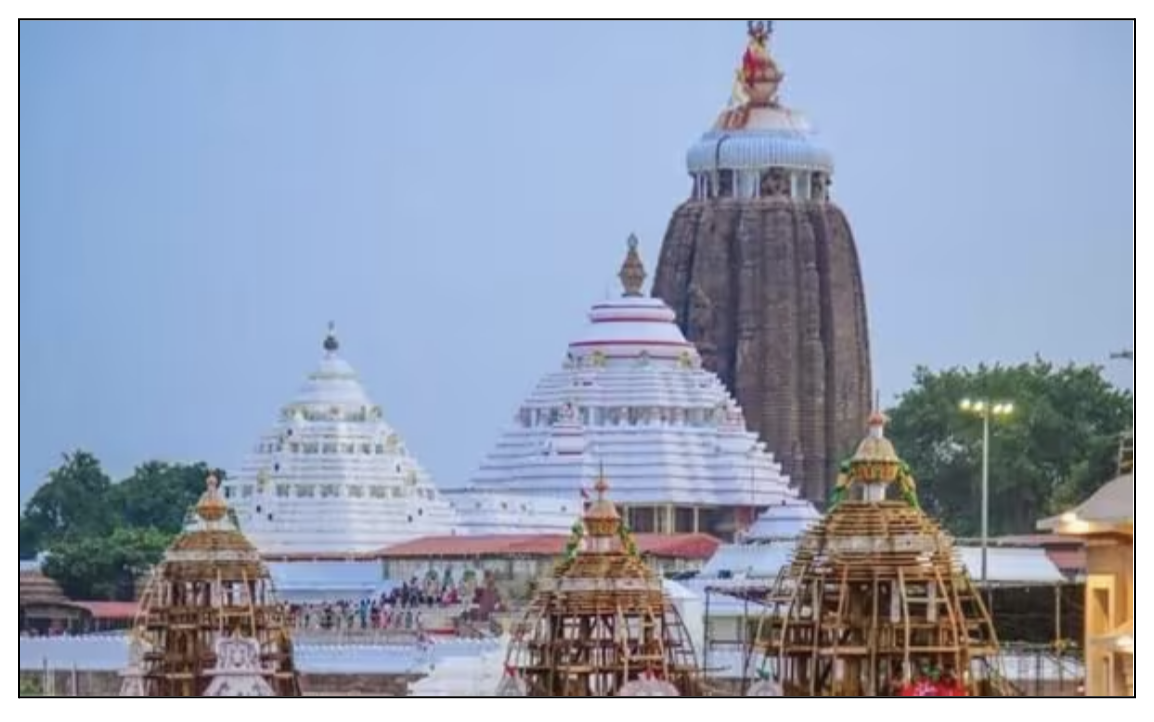News Excerpt:
The Ratna Bhandar within the Lord Jagannath Temple in Odisha is set to open on Sunday after 46 years for an inventory of the ornaments and other valuables.
More detail about news:
- Ratna Bhandar at Lord Jagannath Temple will be opened on July 14. The decision was approved by the government. Authority will open the Ratna Bhandar and will repair it and counting of ornaments will be done.
- The precious ornaments of sibling deities Lord Jagannath, Lord Balabhadra and Goddess Subhadra, donated by devotees and erstwhile kings over centuries are stored in the Ratna Bhandar of the temple.
- It has two chambers:
-
- Bhitar Bhandar (inner chamber) and
-
- Bahara Bhandar (outer chamber).
- The outer chamber is opened regularly to fetch ornaments for the deities during the Suna Besha (golden attire), a key ritual during the annual Rath Yatra, and also during major festivals throughout the year. The last inventory of the lords’ treasury was done in 1978.
- An expert team led by the SJTA chief administrator will visit the treasury in line with a government-approved proposal. The group will include members of the Archaeological Survey of India and temple servitors. The ASI which looks after the maintenance of the 12th century shrine will use the opportunity to carry out repairs.
About Lord Jagannath temple of Puri (Odisha):
- The present gigantic temple of Shree Jagannatha was built during the rule of Anantavarman Chodaganga Deva, the founder of the Ganga dynasty in the first part of 12th century A.D.
- Shree Jagannatha Temple is one of the most finished and refined manifestations of the Indian, especially the Kalingan Architecture.
- The temple was declared as a National Monument for preservation in 1975. The conservation works have been entrusted to Archaeological Survey of India (ASI).
- Lord Jagannatha, as His very name signifies, is the Lord of the Universe (Jagat = Universe; Natha = Lord). He is also popularly known as Mahaprabhu (Maha = Great; Prabhu = Lord).
- The temple is worldly renowned for its Rath Yatra that is held each year.
Architecture of Jagannath Temple:

- The temple stands in the centre of the inner courtyard on a high raised platform.
- The entire temple premises are enclosed by two big concentric walls. The outer wall is known as ‘Meghanada Prachira’ and the inner wall is known as ‘Kurma Prachira’.
- There are four gates in the outer enclosure.
- The eastern entrance is known as ‘Singha Dwara’ or the Lion’s gate.
- The entrances on the southern, western and northern sides of the outer enclosure are known as ‘Aswadwara’ (South gate), ‘Vyaghra Dwara’ (West gate) and ‘Hastidwara’ (North gate) respectively.
- The present main temple has four sections, such as Vimana (Sanctum) where in the principal deities are seated on a stone pedestal (known as Ratna Singhashana), Jagamohana (porch), Natamandapa and Bhogamandapa.
- The architectural style of the temple is a combination of two types of the temple structures, i.e. Rekha and Pidha. While the Vimana is built in the style of nagara type rekha deula, the Jagamohana is in the form of Pidha deula.
- The main temple, the sanctuary (Garbhagruha) is commonly known as Vimana or deula and is built in the framework of Nagara Sthaptya as a rekha deula characterized by a curvilinear tower known as sikhar.
- The viman or deula is built on the pancharatha ground plan in such a manner that its vertical shape starting from the bottom upto the highest level of the curvilinear sikhar is divided into five projected column or pillar like structure i.e rath in each of the four sides. Here lies the unique architectural beauty of the Pancha ratha rekha deula of Shree Jagannatha.
- Both the Vimana (Sanctuary) and the porch (Jagamohana) are divided into five principal parts along the vertical plane, via, the foundation pishta or pitha, the bada (vertical or perpendicular wall), gandi (trunk of a body) i.e, the curvilinear tower in the case of a rekha deula and pyramidal roof in the case of pidha deula and mastaka (head of the crowning elements).
- While the mastaka is circular in cross section, the bada and the gandi are square internally in horizontal sections.
- The Natamandap (the audience hall) and the Bhoga Mandap (the hall for residuary offerings) built in a row in an axial alignment in east-west direction.
- The Nila Chakra or Blue Wheel is an alloy wheel that rests on top of the Jagannath Temple. Made using eight metals(Asta Dhatu).
- The deplastered surface of Shree Jagannatha Temple has brought to light an array of sculptures and other decorative details:
- The lower portion of the platform contains the friezes of Elephants, Horses, Camels and procession of warriors.
- Above it, the remaining portion of the platform is decorated with scroll and floral designs and the top-most course of the platform depicts the procession of horses and elephants above the platform, where the original temple structure starts.
- On both sides of the outer wall of the main temple, figures of Vishnu four on either side are carved which altogether depict 24 forms of Vishnus.
- In the central part of each miniature shrine, images of Vishnu, Dhanwantari and Brahma etc are incorporated within inches of each miniature shrine.
Conclusion:
The famous Jagannath Temple at Puri is truly an epitome of the architectural magnificence of Odisha and the skillful heritage of its artists. It is the most sacred shrine in India. A vibrant and living temple, it occupies a special place in the religious and cultural history of the State of Odisha.


